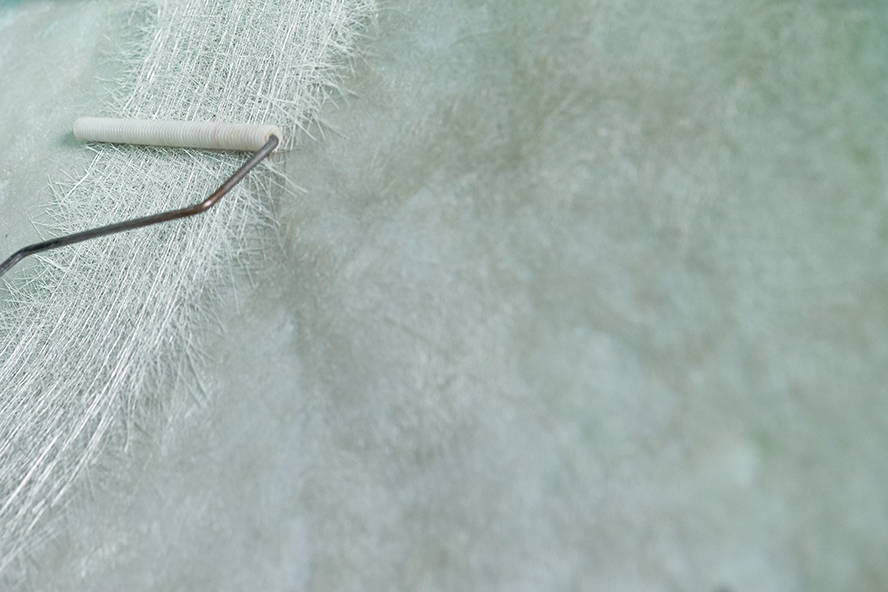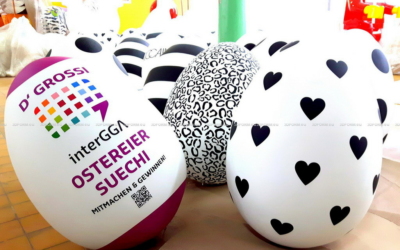Fiberglass Laminate
Fiberglass laminate, also known as (Polyester Reinforced with Glass), is a composite that combines two substances with different chemical and physical properties – resin and thin fiberglass. It is a material with exceptional properties: strong, durable, lightweight, flexible, water-resistant, easy to repair, resistant to rotting and mechanical damage. For this reason, fiberglass laminate is widely used in industry and daily life. Below is a detailed description of its properties, uses, and the challenges associated with recycling this material.
What is Fiberglass Laminate?
Fiberglass laminate is a composite material consisting of two key components:
- Resin – a binding substance that bonds the fiberglass, giving the structure shape and rigidity.
- Fiberglass – thin, strong, and flexible reinforcing fibers that significantly increase the strength and durability of the composite.
Thanks to this structure, fiberglass laminate is highly resistant to external factors such as water, moisture, and UV radiation. It also has exceptional resistance to mechanical damage, such as impacts, making it a popular material in many industrial applications.
Application of fiberglass in industry
Fiberglass is used in over 40,000 applications, including:
- Pool production – fiberglass laminate is waterproof and durable, making it an ideal material for pool production.
- Boat and yacht hulls – the lightweight and corrosion resistance make fiberglass widely used in the maritime industry.
- Guardrails and structural elements – used for the construction of guardrails and structures that must be durable and resistant to weather conditions.
- Surfboards, printed circuit boards, and car bumpers – fiberglass is characterized by flexibility and durability, making it ideal for applications that require impact resistance.
- Bathtubs, windows, roofing, spas, and jacuzzis – fiberglass laminate is moisture-resistant and does not rot, making it an attractive material in construction and bathroom equipment manufacturing.
- Advertising figures and sculptures – fiberglass laminate is used in the production of advertising figures, which are often displayed outdoors. The material is weather-resistant, lightweight, and easy to mold into various shapes, making it popular for creating striking advertising figures for commercial use.
Application of fiberglass laminate in the production of advertising figures and outdoor sculptures, as well as interior decoration
Fiberglass laminate is the perfect material for creating large, durable, and weather-resistant advertising figures that can be seen in front of stores, shopping centers, restaurants, or at various events. Thanks to the flexibility and strength of fiberglass, various forms and shapes can be created, from large figures, animals, to more abstract forms. These figures are characterized by:
- Weather resistance – fiberglass does not corrode, is resistant to water, moisture, and UV radiation, allowing for long-term outdoor use.
- Lightweight – compared to other materials with similar strength, fiberglass laminate is relatively light, making it easier to transport and install.
- Shape versatility – fiberglass fibers allow for the creation of any shape, from simple to highly detailed designs.
Fiberglass recycling – Ecological and sustainable approach
fiberglass laminate, a high-strength composite, can be recycled, which brings environmental benefits and allows for the reuse of this exceptional material. Although the process of recycling fiberglass is challenging, advanced recycling technologies enable its transformation and further use in an environmentally beneficial way. Fiberglass is a versatile material that can be used to create new products with a wide range of applications.
Fiberglass recycling methods
Fiberglass can be recycled in several ways, with each method yielding different results that affect the further use of the material:
- Grinding – in this method, waste fiberglass are crushed into a powder form, which can be used as a filler in products such as cement, artificial wood, or asphalt. The grinding process helps minimize waste, but it destroys the fiber structure, making it impossible to reuse them in their original form.
- Burning (thermal oxidation) – this method involves burning fiberglass waste to generate heat, which is then used to produce steam, heat cement kilns, or other industrial processes. During burning, the fiberglass are destroyed, and the resulting ash can be used to reinforce concrete.
- Pyrrolysis – this process breaks down fiberglass using high temperatures (around 500°C) and vacuum, leading to the breakdown of hydrocarbons in the resin. The products of pyrolysis are pyro-gas, pyro-oil, and solid residues, which can be used as alternative fuels or fillers in various products.
The impact of fiberglass recycling on the environment and industry
Recycling fiberglass allows for the material to be used in an environmentally friendly way, instead of being disposed of in landfills. Thanks to modern processes, this material can be processed and reused, which positively impacts the reduction of waste and pollution emissions. Additionally, the recovered material can be used as fillers and building components, which is cost-effective for companies and environmentally friendly.
How to organize the recycling of our fiberglass laminate products?
If a customer has ordered our fiberglass laminate products and will need disposal or recycling in the future, we offer full support in this area. We cooperate with specialized, licensed companies that handle professional fiberglass laminate recycling. This ensures that we can provide customers with comfort and compliance with environmental standards.
Summary
Fiberglass laminate is an exceptional material that, due to its strength, lightness, and resistance to various factors, has wide applications in many industries. Its versatility makes it present in both industrial constructions and consumer or decorative products. Moreover, fiberglass laminate is a recyclable material, making it an environmentally friendly solution.
Thanks to our cooperation with specialized partners, our company offers full support in the disposal of fiberglass laminate products manufactured by us, providing a convenient and environmentally responsible solution. Whether customers need assistance with recycling used products or want to ensure their choice is sustainable, they can rely on our comprehensive services.






